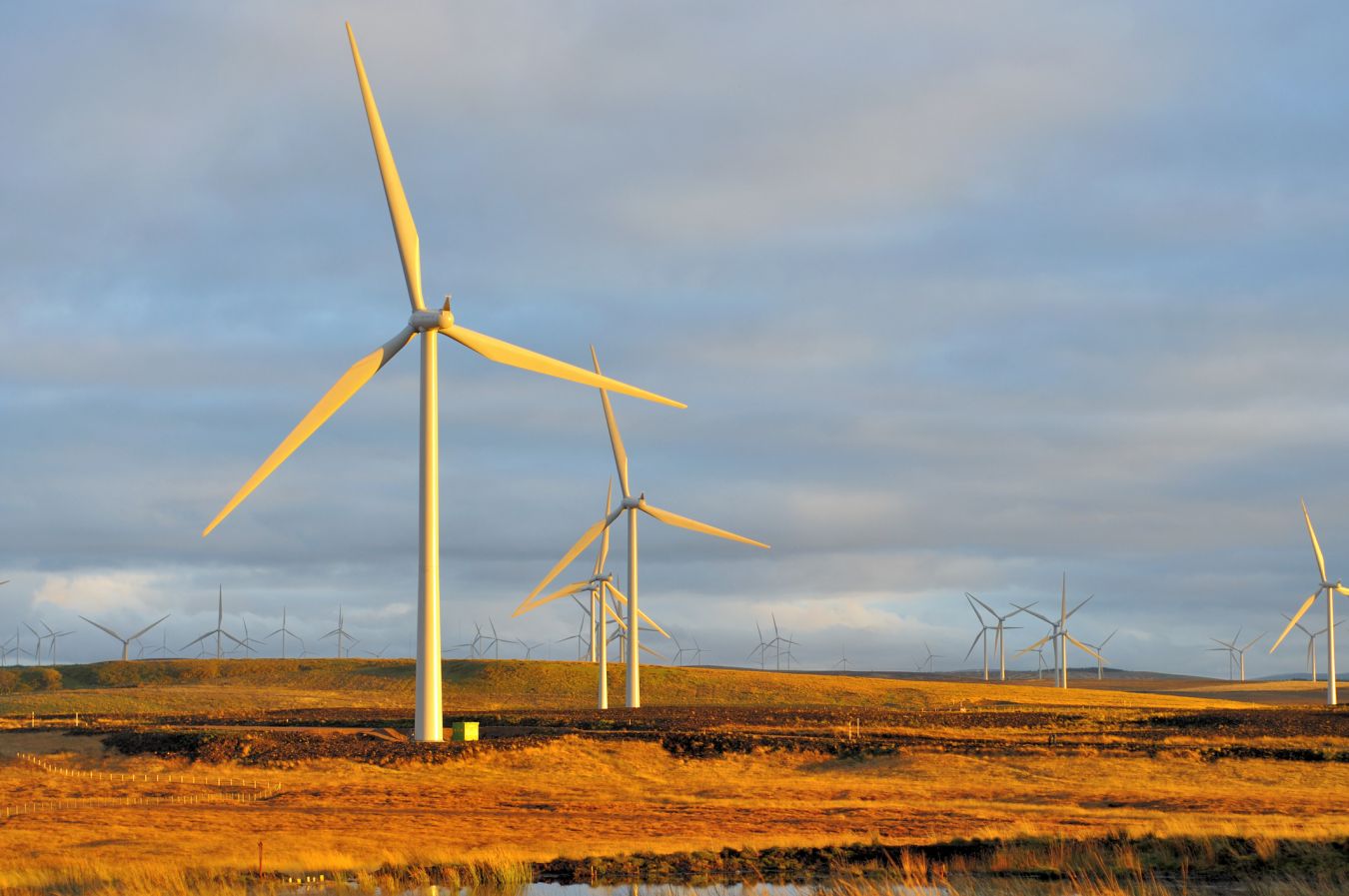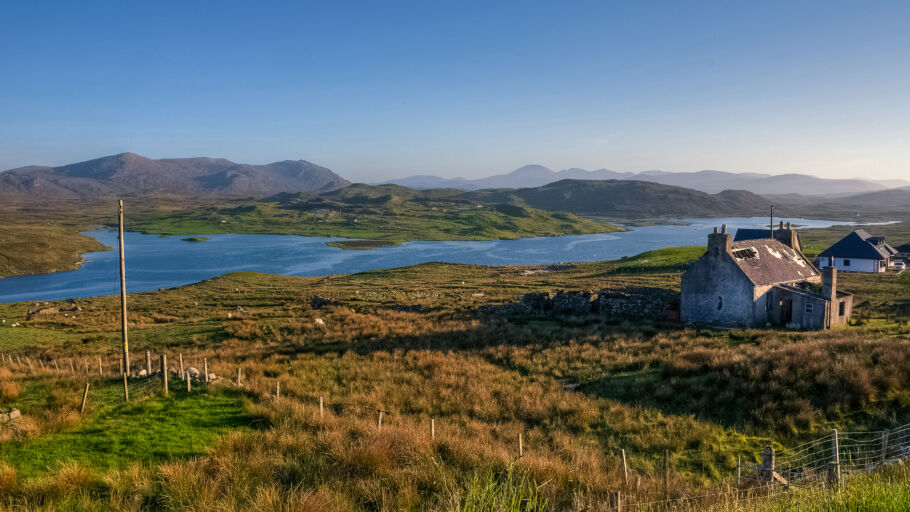
Contributors: Stephanie Hepburn
Date published: 16 May 2023
Unlocking the potential of wind power in Scotland’s crofting counties
Scotland has an enviable track record in onshore and offshore wind, and the Scottish Government’s commitment to wind power is a strong basis on which to grow our renewable capabilities.
Our rural landscape is often ideally suited for wind projects and the Scottish Government’s pledge to generate 50% of Scotland’s overall energy consumption from renewable sources by 2030 provides an opportunity for rural landowners to develop a new source of income by unlocking the land’s potential for the generation of wind power.
More than 750,000 hectares of rural land is held in crofting tenure in Scotland and the crofting counties are rich in natural resources. As a result, there has been an upsurge in the focus of croft and common grazing land as a source of onshore renewable development.
From smaller, individual wind turbine projects developed and operated by landowners themselves, to grid-scale wind farms, many rural landowners are keen to maximise the potential of croft land.
Opportunities to generate an income stream whilst contributing to a cleaner, greener future is seen as a safe and sustainable choice for landowners seeking to diversify and enhance the value of their land.
Wind turbines have a small footprint leaving most of the land still available for farming and this, together with the economic benefits for rural communities, means it’s easy to see how wind power is increasingly becoming an important component of rural land viability.
And it’s not just landowners and developers who are embracing renewable technologies; certain crofters are also looking to wind power as they seek to diversify.
Crofting communities are also realising the benefits of wind power. Beinn Ghrideag, a three-turbine wind farm is built on common grazings land on the Isle of Lewis. Producing £900,000 a year in net income for the local community, it is the largest community wind farm in the UK.
Offshore wind projects may need to utilise croft land too. Power generated from offshore turbines flows through underground cables to onshore substations. This onshoring may require the use of croft land if the cabling routes and substations are to be installed on land subject to crofting tenure.
Collaboration with local stakeholders and communities is vital to the success of renewable development on croft land. There may be advantages in working with farmers, local businesses and tourism operators, not only in sharing costs of wind projects but in securing suitable access and sharing infrastructure.
Engaging with local communities and raising awareness of the positive impact wind power can have on the local economy and environment helps build support for wind projects and ensure the benefits of the project are shared fairly.
Developing renewable projects on croft land is complex, requiring an understanding of crofting law in order to secure the necessary land and grid connection rights often requiring tripartite agreements between developer, landowner and crofters.
Crofting history
Crofting is a traditional system of land management that dates back centuries and is protected by legislation designed to preserve the culture and way of life of the crofters. We can trace that legislation back to 1886 when laws were introduced to give crofters security of tenure after the unrest that followed the Highland Clearances.
Crofting law has undergone substantial reform many times since then but the basic principle of giving the crofter security of tenure remains. The rights afforded to crofters by the modern legislation are mirrored by certain duties, including a duty to cultivate the croft or put it to another purposeful use.
Wind farm projects may conflict with these duties. Many of the bigger scale projects proceed by way of a developer-led leasing model which allows the developer to occupy the croft land and install and operate wind and other energy projects.
However, third party occupation is not permitted without dealing in some way with the crofting tenure and careful thought and attention needs to be given to the both the rights and duties of the crofters, and the crofting community as a whole, before any renewable development plans are put in place.
How to deal with these issues and achieve multiple parties’ objectives, when renewable development is intended on croft or common grazing land, depends not only on the size, scale and type of development proposed but also the views of the crofter and crofting community and whether their interests are aligned with those of the landowner and any developer. It also may depend on who is driving the project – the landowner, the crofter or a third party such as a developer.
Options for dealing with crofting tenure
An application may need to be made to the Scottish Land Court for a resumption order or approval of a scheme for development to allow the development to go ahead.
Resumption removes the land from the control of the crofting legislation and the landlord is free to develop it as they wish or enter into an agreement with a developer to allow them to do so. Resumption of the land from crofting tenure for a renewable energy project is usually temporary and lasts for the lifetime of the development.
At the end of the resumption period, the land is restored to crofting tenure. With a scheme for development, the affected land is retained within crofting tenure with the rights of the crofters suspended for the lifetime of the development.
There is no change to the status of the land as a croft and it can still be used for crofting purpose subject of course to the needs of the development. Both options allow for compensation for the affected crofters.
The role of the Crofting Commission
The Crofting Commission, the non-departmental public body responsible for regulating crofting and promoting the interests of crofting, also has a role to play. If the croft is vacant, the landowner can apply to the Crofting Commission for a decrofting direction, which has the same effect as resumption, and removes the land from crofting tenure but without the need for proceedings in the Land Court.
More commonly, where resumption or approval of a scheme for development is sought from the Land Court, the application must be intimated to the Crofting Commission and it can, if it sees fit, object even if the application is not otherwise opposed by anyone else.
It’s clear that wind is a sustainable source of energy that has the potential to provide numerous benefits for landowners, developers, crofters and crofting communities. A collaborative approach combined with a proper understanding of the complexities around the crofting legislation is key to unlocking that potential.
Contributors:
Stephanie Hepburn
Partner
To find out more contact us here
Sectors: Clean Energy, Energy and Natural Resources, Rural Property and Business















